SPEED MATH
Curriculum Definition
The Speed Math curriculum has been carefully crafted to highlight the significance of mental math calculations, fostering proficiency in solving mathematical problems mentally. It incorporates various methodologies such as abacus techniques and mental shortcuts, enabling swift computation without the need for calculators or written methods.
The primary objective of this curriculum is to improve students’ proficiency in performing arithmetic operations, including addition, subtraction, multiplication, division, and more complex calculations, with dexterity using mental faculties. Beyond mere computation, the curriculum aims to cultivate a strong number sense, enhance memory retention, refine problem-solving skills, and promote mental agility in students.
One notable aspect of this curriculum is its ability to accommodate various learning styles. By incorporating engaging activities, important information, interactive games, and focused exercises, the learning experience becomes an enjoyable pursuit, concurrently refining mental math capabilities.
In essence, the Speed Math curriculum aims to provide learners with practical, real-world applicable skills. By enabling them to adeptly and confidently tackle mathematical challenges, its overarching goal is to strengthen their confidence and competence in this domain.
The significance and uniqueness of Speed Math curriculum
The Speed Math program is designed to enhance mental math skills and broaden understanding through a creative and engaging approach.
It incorporates various topics, such as linking counting beads to fruits for number learning and using animal speed rankings to encourage fast mental calculations.
The program explores diverse areas including transport, sports, music, cultural aspects of numbers, the human body, and space exploration, along with smart games, chemistry, inventors, and artificial intelligence.
By integrating math with these intriguing subjects, the program not only accelerates mental math abilities but also enriches overall knowledge. This innovative blend of math and captivating subjects not only expedites mental calculations but also makes the learning experience more interesting and immersive.
LEVEL 1 KAZOERU (FRUITS theme) – (KG2 – starting level)
The integration of mental math with fruits involves applying calculations to understand sizes, seasons, and cultivation.
It combines practical knowledge with analytical skills, ensuring a comprehensive grasp of fruit characteristics and numerical aspects.
This approach enhances the understanding of fruit farming.
The student can accomplish:
- Recognizing and naming 16 different fruits, ranging from small to big, fostering early familiarity with diverse fruit types.
- Participating in simple and fun cooking activities, introducing basic concepts of preparing desserts with fruits, promoting sensory learning.
- Discovering the concept of seasons related to each fruit, in a playful and visual manner, laying the foundation for understanding the natural world.
- Engaging in interactive games tailored for their age, making the learning of fruit sizes, seasons, and basic culinary skills enjoyable and age-appropriate.
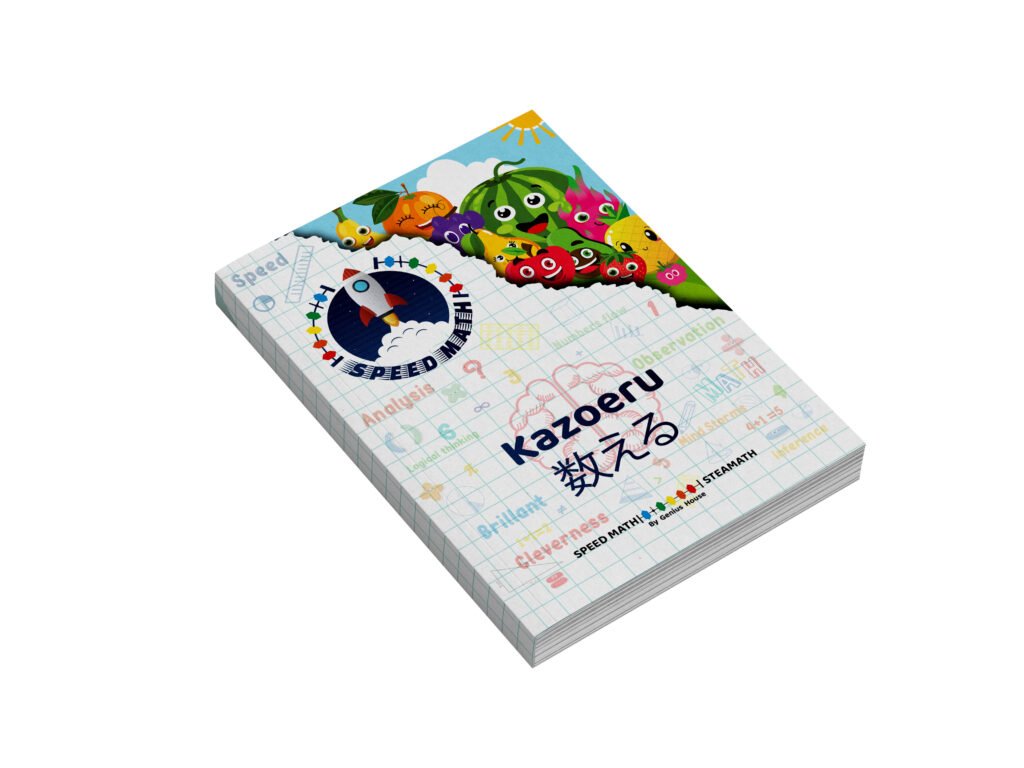
LEVEL 2 SUPĪDO I (ANIMALS theme) – (KG3 – starting level)
The collaboration between mental math and the study of animals involves using mathematical skills to explore aspects such as feeding habits and the countries they originated from.
This synergy enables a more insightful understanding of the intricate patterns and relationships within the natural world, enhancing our ability to comprehend and engage with diverse animal behaviors.
The student can accomplish:
- The student can accomplish the following:
- Understand the various sizes of animals.
- Determine and compare the speeds of different animals, categorizing them from slower to faster, utilizing speed as a comparative metric.
- Identify the habitats of different animals, learning where each species lives.
- Gain knowledge about the dietary preferences and habits of various animals, understanding what they eat.
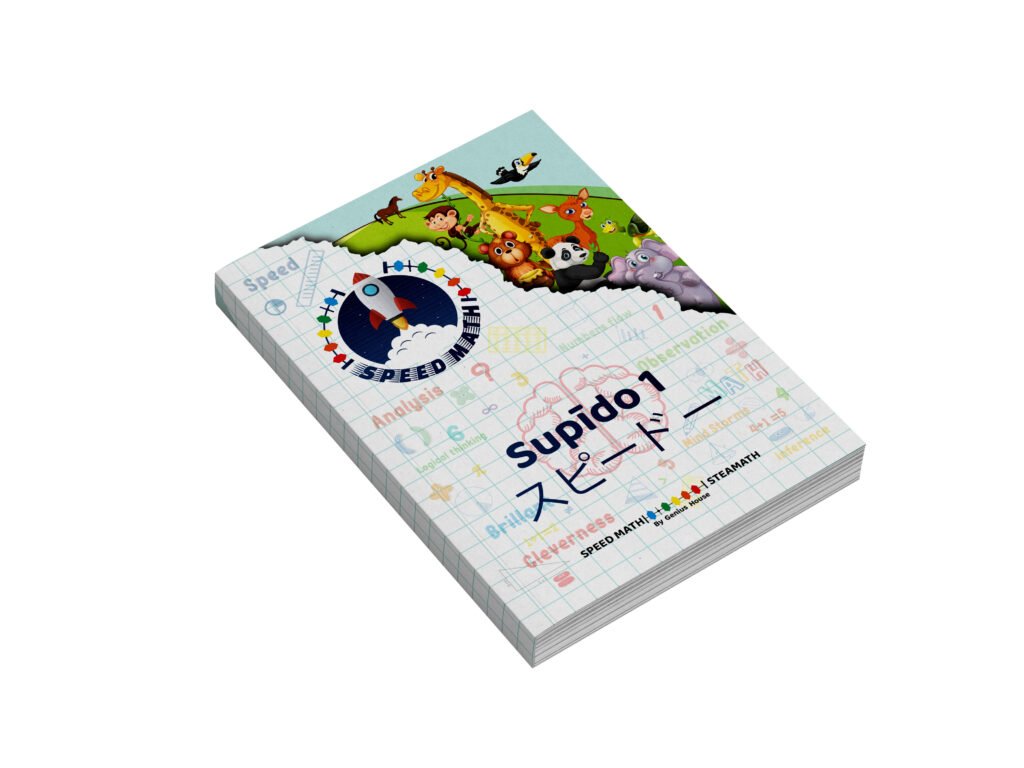
LEVEL 3 SUPĪDO II (TRANSPORTATION theme) – (GR1 – starting level)
The collaboration between mental math and the study of transportation integrates mathematical skills for efficient analysis and optimization of transport systems. Applying mental math enables quick calculations of distances, time, and resource allocation, facilitating improved decision-making in transportation logistics.
This synergy enhances the practical application of mathematical principles in addressing real-world challenges within the field.
The student can accomplish:
- Identify 16 different types of transportation, ranging from slow to fast, such as cars, bicycles, and airplanes.
- Determine the speed of each transportation mode, understanding how fast they can move people or goods.
- Discover who was the first to use each mode of transportation, uncovering historical pioneers and innovators.
- Understand the importance of each transportation method, exploring how they contribute to connectivity and efficiency.

LEVEL 4 YŪNŌ I (SPORTS theme) (GR3 – starting level)
The collaboration between mental math and sports involves the integration of mathematical skills with physical activities. It refers to the use of mental calculations and strategic thinking in sports to enhance performance. This partnership aims to optimize decision-making, analyze game statistics, and improve overall athletic outcomes by applying mathematical principles to various aspects of sports.
The student can accomplish:
- The student can accomplish learning various types of sports, starting from the slowest-paced ones to the fastest.
- They can gain knowledge about measurement and speed in the context of different sports.
- Explore the historical origins of countries associated with various sports, providing a broader cultural understanding.
- Understand the team dynamics by learning how many players are required for each specific sport.

LEVEL 5 YŪNŌ II (MUSICAL INSTRUMENTS) (Transition level)
The collaboration between mental arithmetic and music materializes in the musician’s adeptness to calculate rhythms, intervals, and harmonies in real-time, elevating the creative process. This synergy augments precision in performance and deepens the cognitive nexus between mathematical reasoning and musical expression. Within the intricate interplay of numbers and notes, mental arithmetic emerges as a valuable ally for musicians striving for both analytical finesse and artistic fluency.
The student can accomplish:
- Solve music problems using notes effectively in various situations.
- Learn about different countries related to various music styles and compositions.
- Know 16 musical instruments, from small to big, and their unique features.
- Play complex tunes by combining math skills seamlessly into musical performances.

LEVEL 6 PURO I (COUNTRIES theme) – (GR5 – starting level)
The collaboration focuses on 16 Countries, Their Areas, Maps, Capitals, and Numbers in 16 Different Languages. It explores the geographical and linguistic aspects of diverse nations, promoting a holistic understanding. Merging mental math prowess with cultural and geographical insights reveals interconnected facets defining these countries numerically and spatially.
The student can accomplish:
- Acquiring knowledge of the Middle East map and the world.
- Familiarizing themselves with 16 different countries and languages, enabling the ability to count from 0 to 10 in each language.
- Memorizing the capitals of each country and understanding their respective measurements.
- Developing the skill to draw the flags of each country.
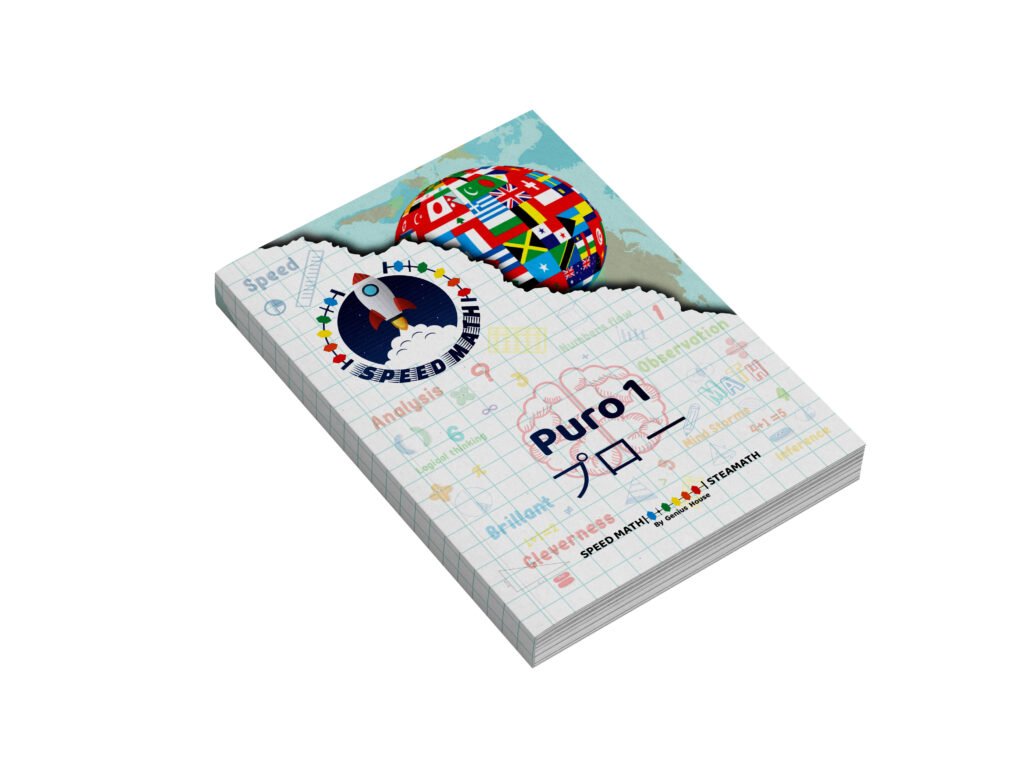
LEVEL 7 PURO II (HUMAN BODY) (Transition level)
The integration of mental math with the human body involves a comprehensive examination of its various components, emphasizing their importance, formal definitions, numerical representation, investigative methods, and the frequencies at which these physiological functions occur. The student can acomplish:
- Knowing 16 organs in the human body and their functions.
- Understanding how these organs work harmoniously for overall well-being.
- Calculating the number of cells, tissues, and neurons within the body’s structures.
- Determining the specific count of cells in each organ for detailed analysis.

LEVEL 8 PURO III (SPACE EXPLORATION) (Transition level)
The collaboration between mental math and the study of planets involves delving into the vast realm of celestial bodies within our solar system, such as planets and black holes. Through this exploration, students use calculations and precise measurements to unravel the mysteries of these astronomical entities, gaining a deeper understanding of their unique properties and behaviors.
The student can accomplish:
- Recognize and name 16 diverse planets and galaxies, showcasing astronomical knowledge.
- Detail each celestial body with accurate labeling for a comprehensive astronomical understanding.
- Determine the precise location of each entity, measuring its distance from the sun.
- Record and analyze temperature data, enhancing comprehension of planetary climates.
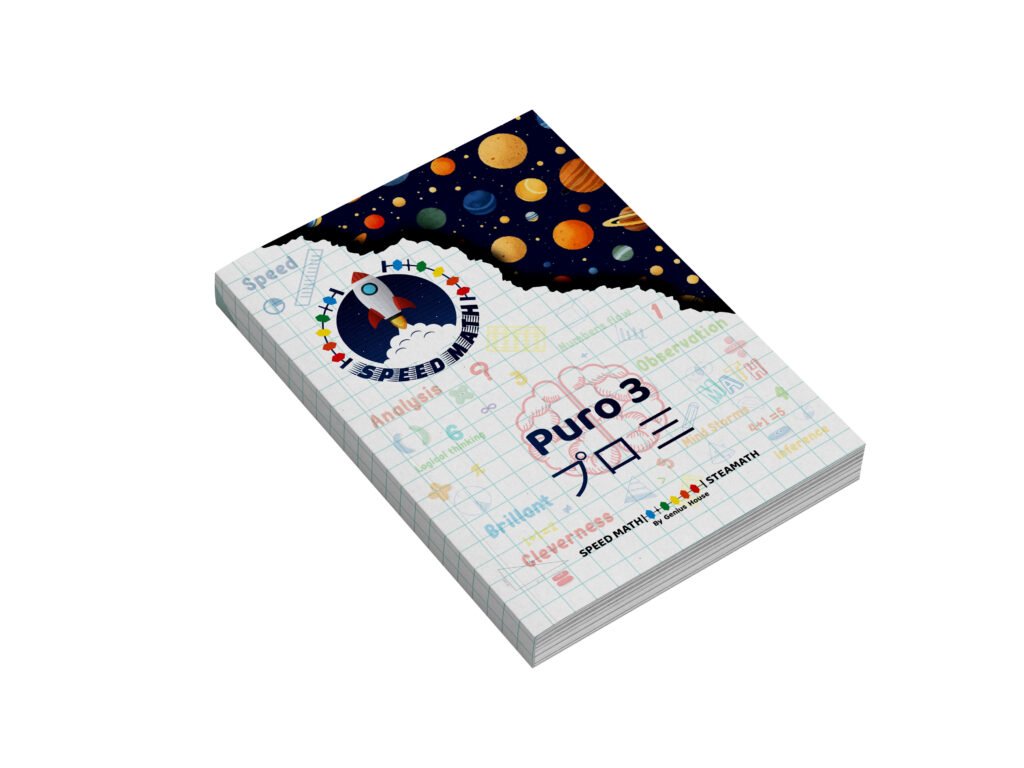
LEVEL 9 MASUTĀ I (SMART GAMES) (Transition level)
Smart Games and Mental Math Integration is a smart way to boost thinking skills by adding math challenges to video games. By mixing math puzzles with strategic decision-making, this idea aims to make gaming more interesting and, at the same time, improve thinking and intelligence.
The student can accomplish:
- Get to know 16 different fun games and learn how to play each one well.
- Improve problem-solving skills by solving math challenges in these games.
- Enhance strategic thinking and decision-making abilities by playing interactive and engaging games.
- Improve speed mental math skills by using math concepts in real-time games.
- Boost overall thinking abilities by taking part in activities that are both entertaining and educational.
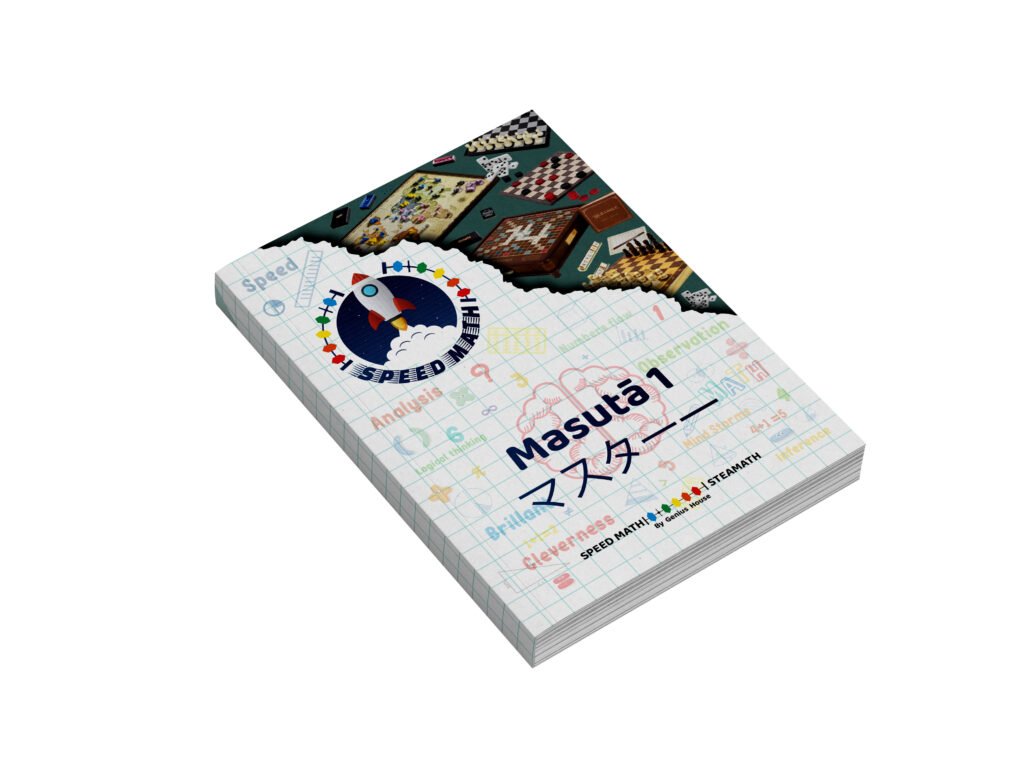
LEVEL 10 MASUTĀ II ( CHEMISTRY REACTIONS (Transition level)
The collaboration of Chemistry and Mental Math comes together as a teaching method that combines hands-on chemistry experiments with mental math exercises. This creative way of teaching encourages people to perform immediate calculations of important values, helping them understand chemical processes deeply and improve their fast math skills at the same time.
The student can accomplish:
- Learn and do 16 basic chemistry reactions well, showing skill in different chemical changes.
- Show a good understanding of the basic principles and mechanisms that control these reactions, demonstrating a deep understanding of chemical processes.
- Use what they’ve learned to solve difficult problems and make smart choices in real-world lab situations, focusing on combining theoretical knowledge with hands-on experiments.
- Build important analytical skills to evaluate, fix, and improve reaction conditions, encouraging flexibility and resourcefulness in dealing with challenges in chemical experiments.

LEVEL 11 MASUTĀ III (ENERGY SOURCES) (Transition level)
Energy sources are vital to modern society and can be categorized into Traditional Energy, Fossil Fuels, Bio-Fuel, Renewable Energy, Atomic Power, and the Next Generation of Energy Sources. Combining mental math with the study of energy allows students to sharpen their calculation skills while gaining a deeper understanding of energy consumption, efficiency, and environmental impacts. This approach not only enhances scientific knowledge but also improves students’ ability to analyze data and make informed decisions regarding sustainable energy use and future solutions. The student can accomplish:
- Understand Energy Types: Learn about different energy sources, including fossil fuels, bio-fuels, renewable energy, atomic power, and emerging energy technologies.
- Perform Energy Assessment: Use mental math to calculate energy usage, cost efficiency, and the environmental impact of different energy sources.
- Evaluate Environmental Impact: Assess the environmental consequences of various energy sources and their role in climate change.

LEVEL 13 RĪDĀ 1 ( ARTIFICIAL INTELLIGENCE AI theme ) (Transition level)
The integration of Mental Math Challenges alongside Artificial
Intelligence introduces a pioneering method to enhance the
understanding of AI. It seamlessly incorporates mental math
challenges into coding and algorithmic exercises. This unique
initiative seeks to encourage participants to practice quick mental
calculations, promoting a mutually beneficial connection between
mathematical skills and the improvement of intelligent systems
through effective algorithmic design.
The student can accomplish:
- Acquire a thorough understanding of 16 important real-world applications of Artificial Intelligence, covering areas such as healthcare, manufacturing, and transportation.
- Learn about robotics and smart automation.
- Develop practical skills in applying AI algorithms and models, showcasing coding proficiency and expertise in algorithmic design through practical projects.
- Develop practical skills in applying AI algorithms and models, showcasing coding proficiency and expertise in algorithmic design through practical projects.

LEVEL 13 RĪDĀ II ( INVENTORS theme ) (Transition level)
Inventors are visionary creators who propel exploration through integrating mental math challenges into their studies and innovations. This fosters a deeper comprehension of mathematical applications in engineering, technology, and economics, enhancing participants’ problem-solving skills and inspiring them to aspire to become ideal inventors while learning about 16 different innovators.
The student can accomplish:
- Develop proficient problem-solving skills through engaging in mental math challenges.
- Acquire a comprehensive understanding of 16 different inventors and their contributions.
- Cultivate a strong foundation in mathematical applications relevant to engineering and technology.
- Inspire an aspiration to become an ideal inventor by celebrating and learning from groundbreaking achievements.
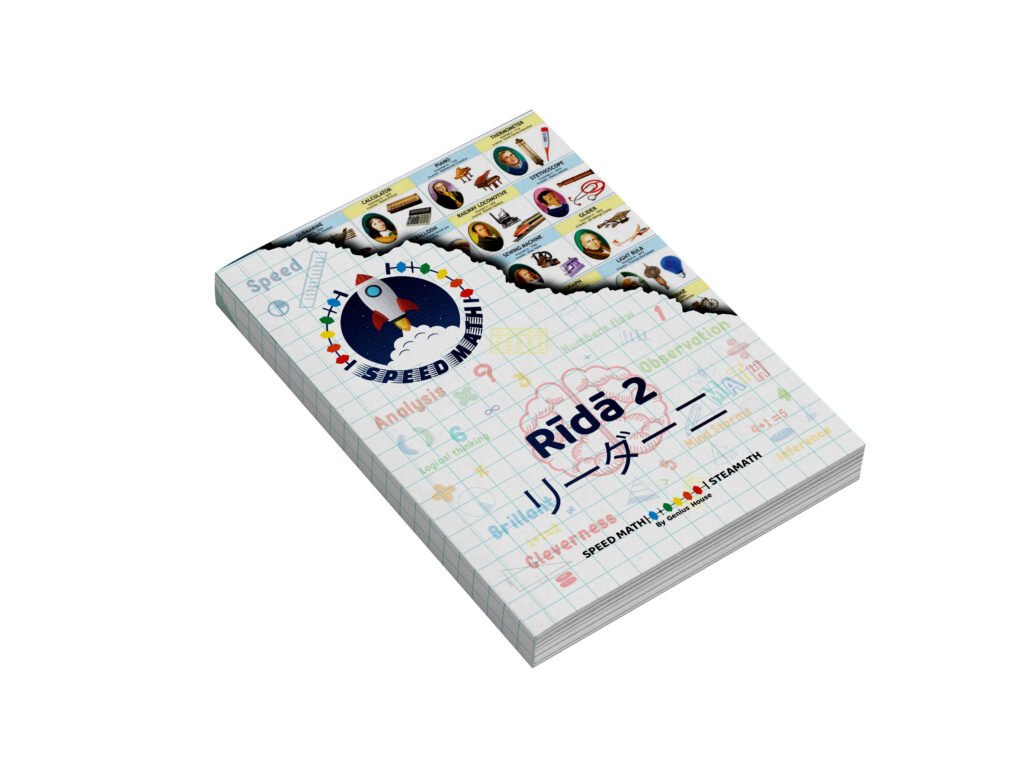
LEVEL 14 RĪDĀ III ( UNIVERSITY MAJORS theme ) (Transition level)
University majors offer a variety of disciplines, such as business,
sciences, healthcare, and technology, each providing unique skills
and knowledge for various career paths. Students can enhance their
problem-solving abilities and analytical thinking by applying theoretical
knowledge to real-world situations and engaging in critical discussions.
Combining mental math with these fields helps improve decision-making
and critical thinking skills, especially in areas where calculations and data
interpretation are essential for success, such as research, healthcare,
and technical professions
The student can accomplish:
- Understand Various Majors: Gain insight into different university majors, including business, sciences, healthcare, and technology.
- Acquire a comprehensive understanding of 16 different inventors and their contributions.
- Improve Problem-Solving: Enhance their problem-solving abilities and analytical thinking through real-world applications of theoretical knowledge.
- Use Several Analyses: Apply various analytical techniques across different fields, such as data analysis in business, statistical analysis in sciences, or clinical analysis in healthcare.
- Conduct In-Depth Analysis: Develop the ability to conduct thorough analyses of
complex issues, considering multiple perspectives and data sources, to make informed
decisions in various professional fields.

